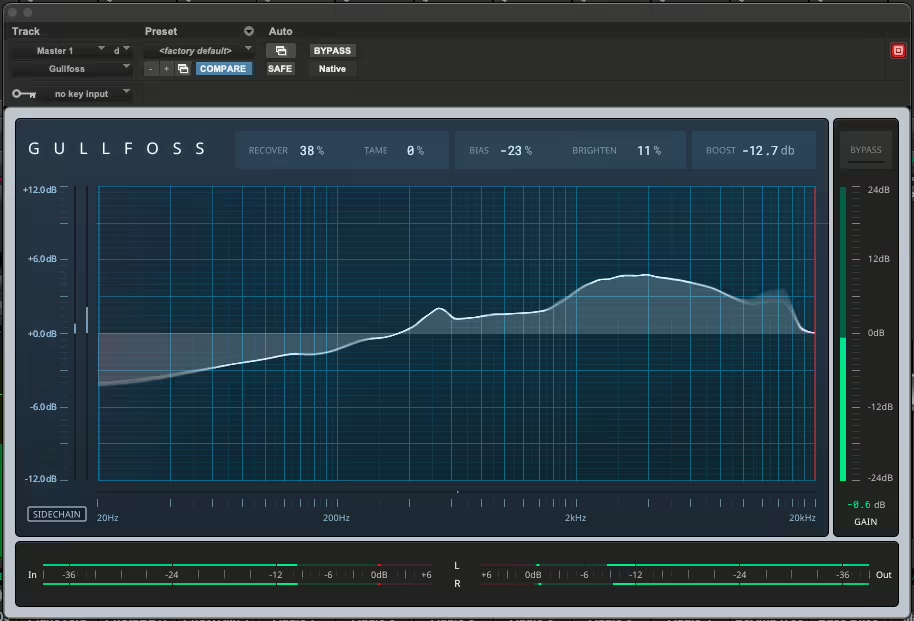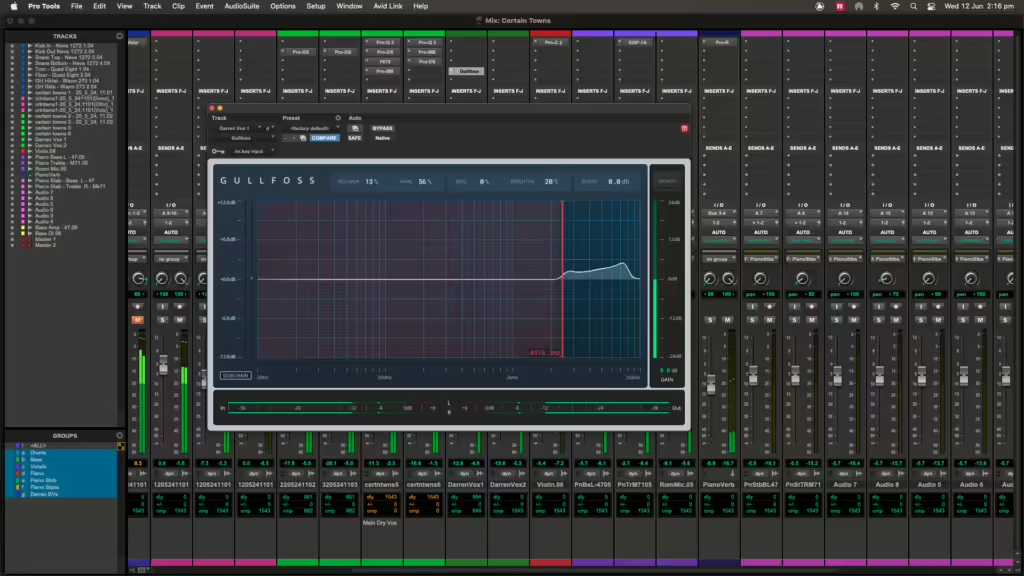Review: Soundtheory Gullfoss
In a world where plug-ins outnumber grains of sand, it’s hard to find unique takes on standard audio tools like EQ or compression, let alone new audio concepts that break the standard moulds to offer something different
by Andy Stewart

Get mutech updates in your inbox
In a world where plug-ins outnumber grains of sand, it’s hard to find unique takes on standard audio tools like EQ or compression, let alone new audio concepts that break the standard moulds to offer something different.
But without question, Soundtheory has done just that with Gullfoss.
Gullfoss – which, if you’re wondering, is named after a waterfall in Iceland – is essentially a sound balancing signal processor plug-in that works in real time, to maximise your audio signals, whether it be a stereo bus, an individual vocal or a drum group… anything basically.
Gullfoss doesn’t use DSP or A.I. but rather something Soundtheory describes as “computational auditory perception technology.”
In use, Gullfoss puts real-time control over audio effortlessly at your fingertips. It balances standard audio concepts of tone, expansion, compression and volume seamlessly all at once, with a unique set of tools. The most notable of these are Tame, Recover, Bias and Brighten, that work hard in the background to make your life easier, while still giving you enough control over your audio processing to allow you to make your own macroscopic decisions. Gullfoss doesn’t treat you like a dummy by making all the decisions for you, but it does take the lion’s share of the workload off your hands.

Tame and Recover are the two fundamental controls on the Gullfoss UI (which looks great by the way, and similar in aesthetic to FabFilter’s EQ3). Tame reduces dominating tones (300 times a second), while Recover dynamically expands, or lifts, the audio elements. Secondary tools working off the back of these two primary controls are Bias and Brighten. Bias is essentially a control that, when given a negative value, preferences the effect of the primary Tame control, while a positive Bias value preferences the effect of the Recover control. Brighten, meanwhile, not surprisingly effects the overall brightness of these changes.
There’s also a ‘Boost’ control, which is essentially a ‘perceived loudness’ control. It doesn’t change the actual volume, only the relative loudness of the bass and treble relative to the midrange, essentially like a Fletcher-Munson curve. And if you only want the main controls to affect only a specific band of the audio spectrum, there are also handy vertical ‘goalposts’ controls, which when dragged into the frame from left or right, restrict your changes to within these goalposts.
Soundtheory’s Gullfoss plug-in a beast, particularly if you appreciate the power of audio processing in real-time. Gullfoss is indeed worthy of anyone’s plug-in arsenal, whether you’re a hobbyist or a world-famous mastering engineer, and the more you use it the better Gullfoss gets. Get to know this plug-in and pretty soon you’ll wonder how you ever worked without it.
Check out the video intro here: